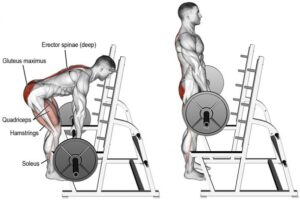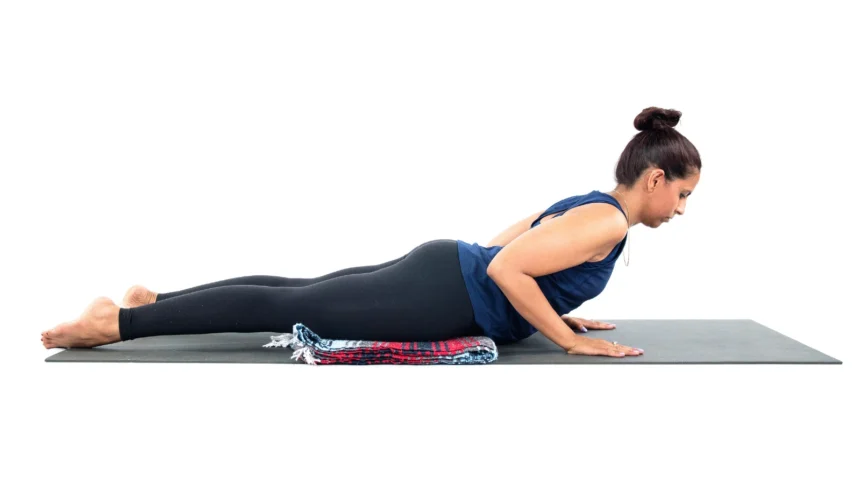The erector spinae muscles play a crucial role in maintaining posture, supporting the spine, and enabling various movements like bending, twisting, and lifting. Strengthening these muscles is essential for overall back health, injury prevention, and improved athletic performance. In this article, we’ll explore the best erector spinae exercises, their benefits, and how to incorporate them into your fitness routine.
What Are the Erector Spinae Muscles?
The erector spinae is a group of muscles and tendons that run along the length of your spine, from the lower back to the neck. These muscles are divided into three main groups:
- Iliocostalis: Located on the outermost side, it helps with lateral flexion and extension of the spine.
- Longissimus: Found in the middle, it assists with spinal extension and rotation.
- Spinalis: The innermost group, responsible for stabilizing and extending the spine.
Together, these muscles work to keep your spine erect, support your posture, and allow for smooth movement.
Benefits of Strengthening the Erector Spinae
Incorporating erector spinae exercises into your workout routine offers several benefits:
- Improved Posture: Strong erector spinae muscles help you maintain an upright posture, reducing the risk of slouching.
- Injury Prevention: A strong back reduces the likelihood of lower back pain and injuries during physical activities.
- Enhanced Athletic Performance: These muscles are vital for movements like running, jumping, and lifting weights.
- Spinal Stability: Strengthening the erector spinae improves spinal alignment and stability, which is essential for daily activities.
Top Erector Spinae Exercises
Here’s a list of effective exercises to target the erector spinae muscles. These exercises can be performed at home or in the gym, depending on your equipment availability.
1. Deadlifts
Deadlifts are one of the most effective compound exercises for strengthening the erector spinae and the entire posterior chain.
How to Perform:
- Stand with your feet shoulder-width apart and a barbell in front of you.
- Bend at your hips and knees to grip the barbell with both hands.
- Keep your back straight and chest up as you lift the barbell by extending your hips and knees.
- Lower the barbell back to the ground with control.
Tips:
- Avoid rounding your back to prevent injury.
- Start with lighter weights to perfect your form.

2. Superman Exercise
The superman exercise is a bodyweight movement that directly targets the erector spinae.
How to Perform:
- Lie face down on a mat with your arms extended in front of you.
- Simultaneously lift your arms, chest, and legs off the ground.
- Hold the position for a few seconds, then lower back down.
Tips:
- Focus on squeezing your lower back muscles during the lift.
- Perform 3 sets of 12-15 repetitions.
3. Good Mornings
Good mornings are a great exercise for isolating the erector spinae while also engaging the hamstrings and glutes.
How to Perform:
- Place a barbell across your upper back and stand with your feet shoulder-width apart.
- Hinge at your hips, lowering your torso until it’s almost parallel to the ground.
- Return to the starting position by engaging your lower back and glutes.
Tips:
- Keep your back straight throughout the movement.
- Use a light barbell or resistance band if you’re a beginner.
4. Bird Dog
The bird dog is a functional exercise that improves core stability and strengthens the erector spinae.
How to Perform:
- Start in a tabletop position with your hands under your shoulders and knees under your hips.
- Extend your right arm and left leg simultaneously, keeping your back straight.
- Hold for a few seconds, then return to the starting position.
- Repeat on the opposite side.
Tips:
- Avoid arching your back during the movement.
- Perform 3 sets of 10-12 repetitions per side.
5. Hyperextensions
Hyperextensions are a gym-based exercise that isolates the erector spinae.
How to Perform:
- Position yourself on a hyperextension bench with your hips resting on the pad.
- Cross your arms over your chest or place your hands behind your head.
- Lower your torso until it’s at a 90-degree angle, then lift back up.
Tips:
- Avoid overextending your back at the top of the movement.
- Perform 3 sets of 12-15 repetitions.
Sample Erector Spinae Workout Plan
Here’s a simple workout plan to target your erector spinae muscles:

| Exercise | Sets | Repetitions |
|---|---|---|
| Deadlifts | 3 | 8-10 |
| Superman Exercise | 3 | 12-15 |
| Good Mornings | 3 | 10-12 |
| Bird Dog | 3 | 10-12 (each side) |
| Hyperextensions | 3 | 12-15 |
Tips for Safe and Effective Training
- Warm-Up: Always warm up before starting your workout to prepare your muscles and reduce the risk of injury.
- Focus on Form: Proper form is crucial for targeting the erector spinae and avoiding strain on your lower back.
- Progress Gradually: Start with lighter weights or easier variations and gradually increase the intensity as you build strength.
- Incorporate Rest Days: Allow your muscles to recover by including rest days in your workout routine.
Common Mistakes to Avoid
When performing erector spinae exercises, avoid these common mistakes:
- Rounding the Back: This can lead to lower back injuries.
- Using Excessive Weight: Lifting too heavy can compromise your form and increase the risk of injury.
- Neglecting Core Engagement: A strong core supports your lower back during these exercises.
Why Erector Spinae Strength Matters
Strong erector spinae muscles are essential for maintaining a healthy and functional body. Whether you’re an athlete, a fitness enthusiast, or someone looking to improve their posture, incorporating these exercises into your routine can make a significant difference.
For more fitness tips and workout guides, visit TrendsMag, your go-to source for health and wellness information.
Conclusion
Erector spinae exercises are a vital component of any fitness routine, helping to improve posture, prevent injuries, and enhance overall strength. By incorporating the exercises mentioned above, you can build a strong and resilient back that supports your daily activities and fitness goals.
Remember, consistency is key! Start with the basics, focus on proper form, and gradually progress to more challenging variations. For more expert advice and fitness insights, don’t forget to check out TrendsMag.





